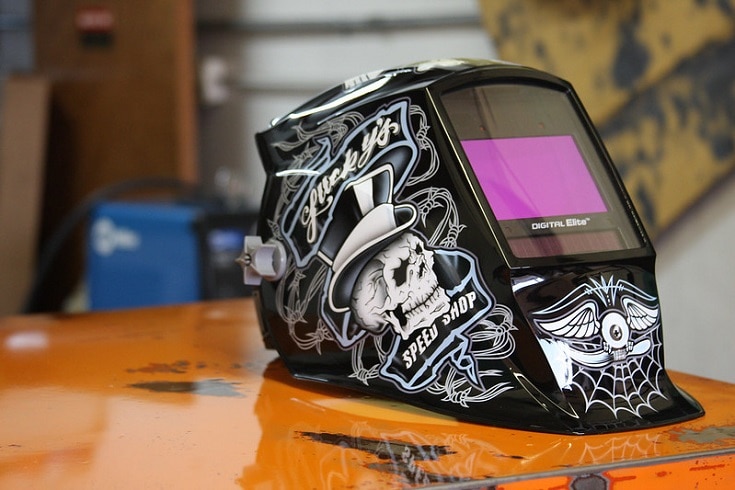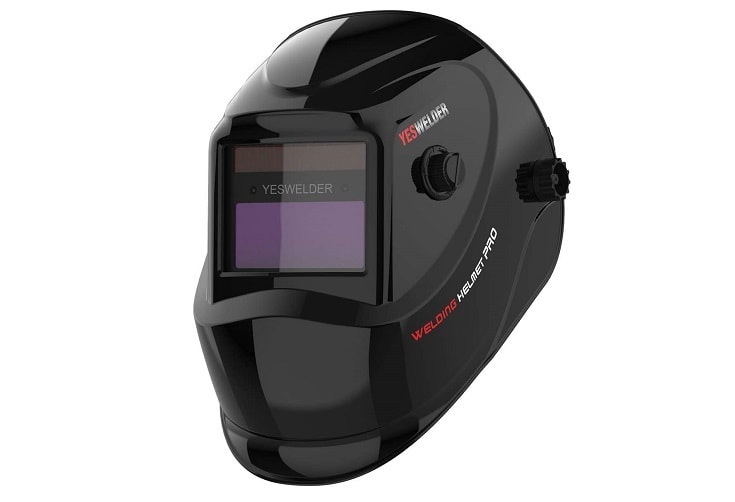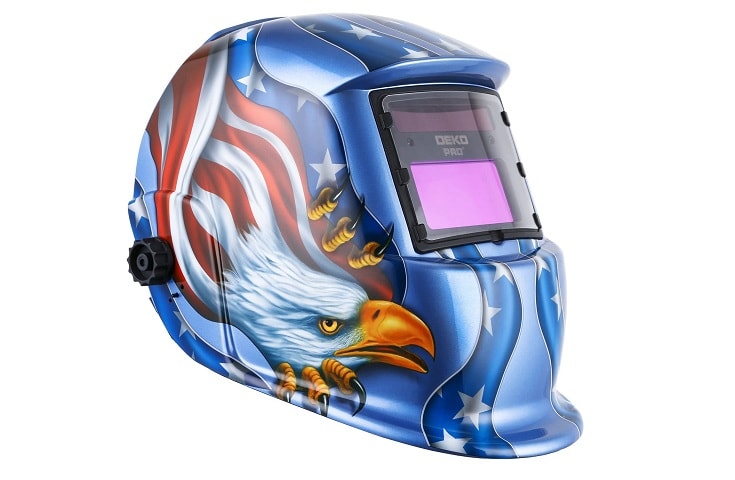How an Auto-Darkening Welding Helmet Works
Last Updated on

Once upon a time, welding helmets were pretty simple. They had a darkened lens that allowed you to look at what you were welding without straining your eyes. To check the weld in normal lighting, you had to lift them up, however.
Today, technology has gotten a bit fancier. Now, you don’t have to lift the helmet up. Instead, many welding helmets are auto-darkening. This means they darken while you are welding and then lighten back up when you aren’t.
While this technology may have revolutionized how many welders worked, it is actually quite simple. We’ll take a look at how these helmets work in this article.
The Basics
All auto-darkening welding helmets have some sort of light sensor towards the front. When this sensor picks up on light or darkness, it sends a signal to the lens to change its tint. In this way, the technology is actually very simple.
However, with this technology, there are some problems and complications many welders run into. While this technology is typically considered a must-have for people today, it is vital to know how to use and care for it properly. Otherwise, it may not last very long.
Do All Auto-Darkening Welding Helmets Have Batteries?
Pretty much, yes. There are some that run on only solar power. However, that means that you’ll need to be outside on a sunny day to use them or they won’t work. As you might guess, they aren’t very popular for that reason.
Instead, most welding helmets have batteries and are helped out a bit by a solar panel. In other words, they will make their own energy when in the sunlight. Otherwise, they can draw from a battery. As you might imagine, this means you will need to change the battery at some point. Luckily, most have changeable batteries.
There are some with non-changeable batteries. Whenever these run out of juice, you’ll pretty much have to purchase a completely new helmet. This can cost you a bit of money over time, so it is recommended that you just purchase one with changeable batteries up front.

Breaking It Down – The Parts of an Auto-Darkening Helmet
There are a few main parts of an auto-darkening helmet. These work together to make the mask work. While you don’t need to know the specifications of each piece to use one of these helmets, it can help with troubleshooting and that sort of thing.
The UV/IR Filter
This filter is the furthest layer from your eyes in most helmets. Its job is to remove UV/IR radiation all the time. This portion is not activated or deactivated. It is always on and working.
It is made out of a thin piece of glass and many metallic layers, which are made of silver and aluminum oxide. These layers are designed to absorb 99% of the IR radiation, which protects your eyes and the other parts of the lens. These layers do not protect from much UV by themselves, but they work with other layers to protect against most UV radiation. They’re the first line of defense and make the job of the other layers much easier.
This filter also absorbs light on the blue end of the spectrum. This is why the colors will be slightly greenish while you’re wearing the helmet, while those looking at your lens will see that it is a reflective, purple color.
Polarization Filters
These filters are usually directly after the UV/IR filters. There are many filters and they are laid going in different directions. Depending on which angle you look at them, you may be able to see all the way through them or not see through them at all.
To be specific, when the filters are arranged at 90-degree angles on top of each other, all the outside light is covered. When the filters are laid at the same angle, you can see right through them. In other words, they make the lens darken or lighten depending on how you move them. This is essential for the auto-darkening lens to work. This is how it darkens and lightens.
LC Screen
Liquid Crystal Cells, which are often shortened to LC, is exactly what it sounds like – liquid crystals. When these crystals lay flat, they twist the light that hits them by 90-degrees. In other words, you can’t see through them because they turn the light away from your eyes.
However, you can stimulate these crystals with electricity to make them turn the light at different angles. This is another important layer for the auto-darkening feature to work properly.

How Do All These Layers Work Together?
For the auto-darkening feature to work, all of these layers have to work together perfectly. The polarizing filters usually work as a failsafe. If the electric portion of the mask fails, it will still protect your eyes from the most powerful light. However, it will not auto-darken. Instead, it will be stuck at a shade of 5 or 6.
When everything is working properly, the LC between the polarization filters untwists the light, bending it into your eyes. In other words, the polarization filters always bend the light away from your eyes. When activated, the LC undoes this, which makes the lens look like it is brightening. When this happens, the helmet is at about a shade 3.
When an arc is struck, a sensor on the helmet recognizes the increase in light and turns off the LC, which darkens the lens back to its original 5-6 shade level.
This is all quite complicated. Luckily, you don’t have to have an innate understanding of this to use a helmet. Just know that the layers shift using electricity depending on the amount of light the sensor is sensing. This is how the lens darkens or lightens while you’re welding and also why these helmets use electricity.
Featured Image: Weld House LLC, Flickr
